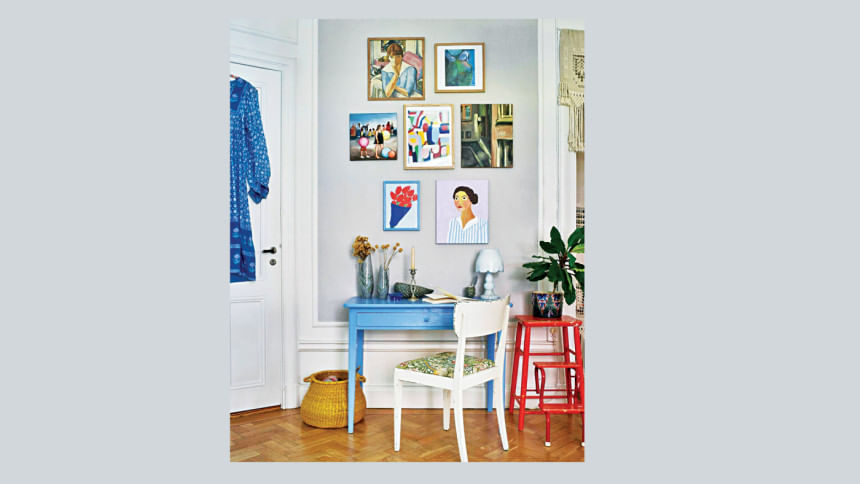The 3-5-7 effect on the wall

Blank walls can be intimidating. You've got a stack of paintings or prints, a hammer in hand, and a vague idea of what might look good. Where do you even begin? That's where the 3-5-7 rule comes in. It's a simple design principle built on the idea of hanging artwork in groups of odd numbers: three, five, or seven. This is to create visually pleasing, balanced arrangements. Once you understand why it works, you'll never look at a wall the same way again.
Odd numbers are powerful because of how our brains process visuals. Our eyes are naturally drawn to imbalance. When you see a grouping of three, five, or seven, it feels dynamic and engaging. It looks less like a showroom and more like a curated space. Even numbers often feel too stiff or predictable. Odd numbers introduce movement and flow, guiding the eye across the wall in a way that feels natural and intentional.
Start with three
Three is the easiest and most versatile number to work with, especially in smaller spaces like entryways or above a console table. Three pieces can be aligned in a straight row, stacked vertically, or staggered diagonally to create a sense of rhythm. As long as the pieces share some common thread, such as black-and-white photography or matching wood frames. You will end up with a cohesive mini-gallery that doesn't overwhelm the space.
Move to five
With five, you can start tackling medium or large walls. This number gives you room to experiment. Two pieces on either side of a central artwork create balance, while an asymmetrical grid with mixed frame sizes feels modern and bold. Five-piece groupings strike a nice balance between full and airy. They fill a space without feeling cluttered and are perfect above a sofa, bed, or long hallway.

Seven for a statement
Seven-piece arrangements are the showstoppers. They demand attention and work best on large, open walls that need a strong focal point. The key is to keep them intentional. Lay the pieces out on the floor first to test placement and spacing. Use one or two larger anchor pieces in the center, then build outward with smaller works. Mixing styles, mediums, or colours can look exciting, but include some unifying elements so the final display feels cohesive rather than random.
The flexibility of 3-5-7
The beauty of the 3-5-7 rule is its flexibility. You don't need expensive art or professional installers to make it work. All it takes is a sense of balance, a bit of creativity, and the confidence to try something new. Whether you are decorating a fresh space or refreshing an old one, this odd-number approach can transform any wall into a statement.
More than math
In the end, the 3-5-7 rule is not really about numbers. It is about storytelling. Through art, you can reflect personality, mood, and style. When done right, your wall does more than just display paintings. It tells a story that is uniquely yours.

 For all latest news, follow The Daily Star's Google News channel.
For all latest news, follow The Daily Star's Google News channel. 



Comments